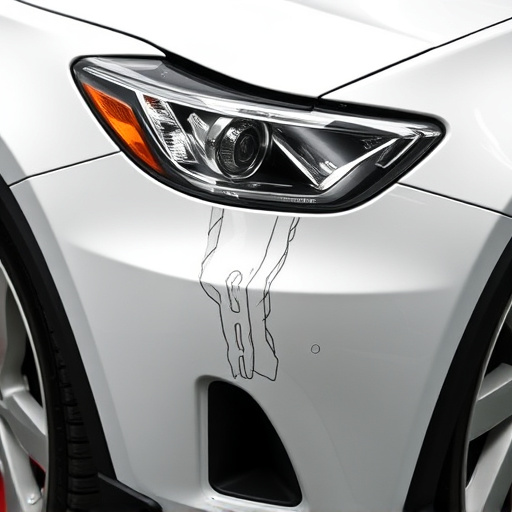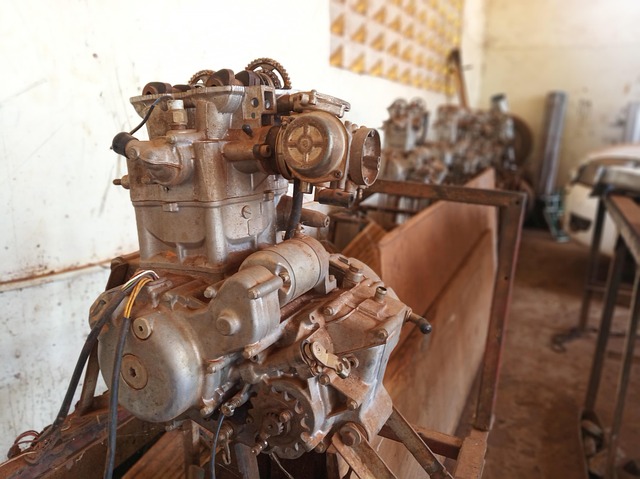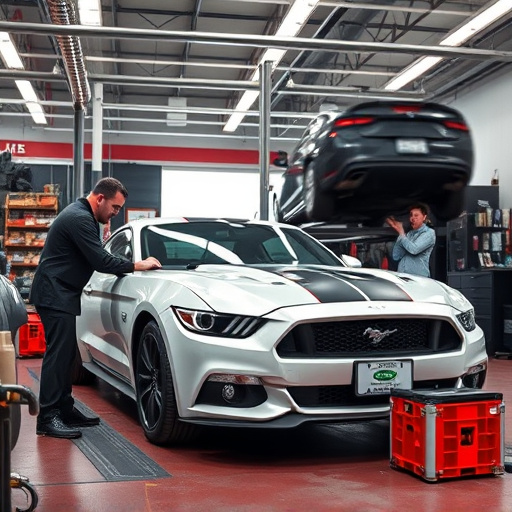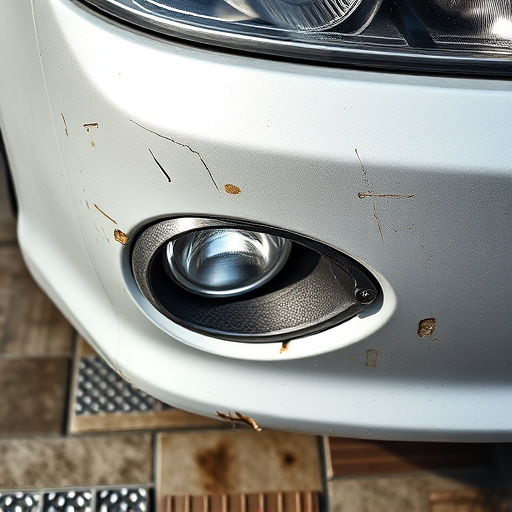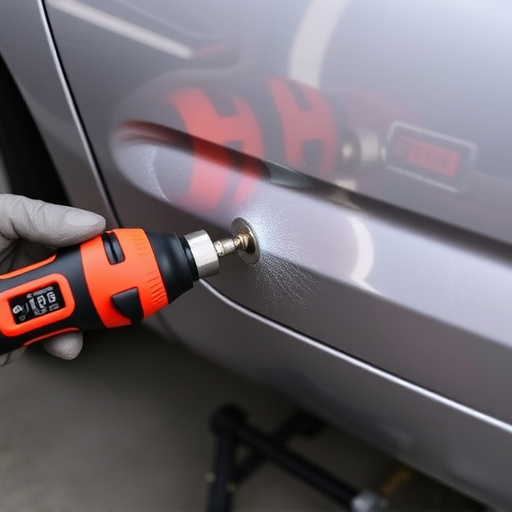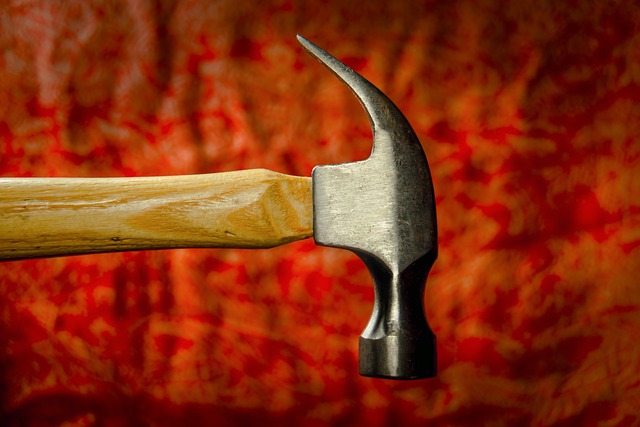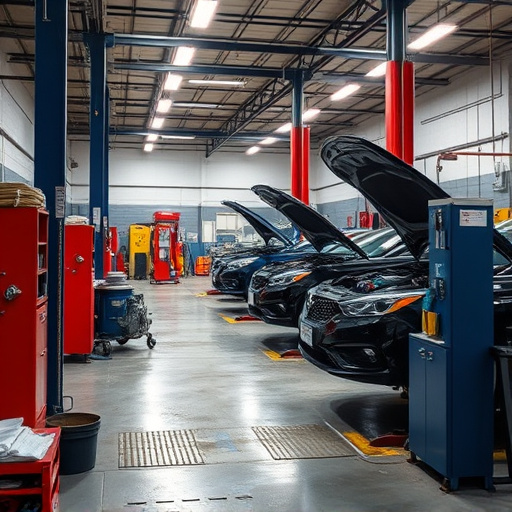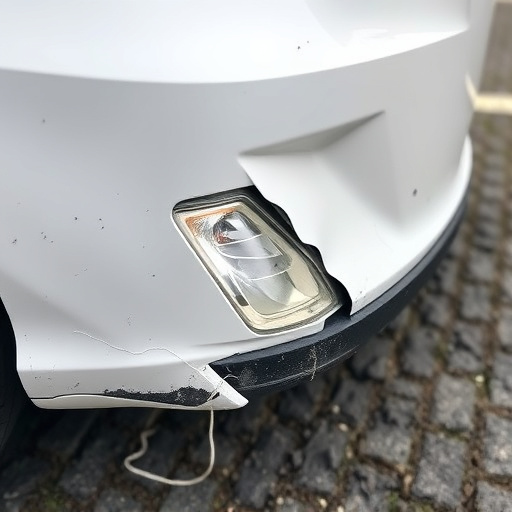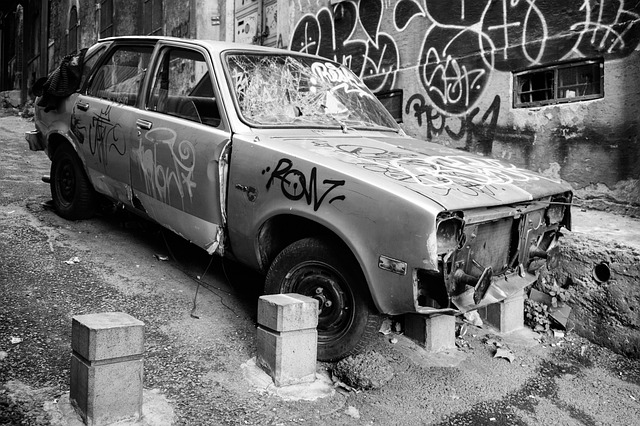Exhaust system collision repair is a specialized field requiring advanced techniques and tools to restore vehicles to pre-accident condition. This process addresses unique challenges of high temperatures and structural stresses, involving careful damage assessment, disassembly, and precise repair or replacement with compatible materials. Modern auto shops use sophisticated equipment, high-quality parts, and tailored techniques for various vehicle models, ensuring not just aesthetic restoration but also optimal engine performance. Safety is paramount, with strict quality control, protective gear, and advanced diagnostic tools to uncover hidden issues, guaranteeing structural safety and enhanced performance post-repair.
In the realm of automotive restoration, exhaust system collision repair stands out as a complex yet crucial process. When a vehicle sustains damage, professional technicians employ advanced techniques to ensure optimal performance and safety post-collision. This article delves into the essential steps, tools, and safety measures required for effective exhaust system collision repair, providing insights that underscore the importance of quality control in this specialized field.
- Understanding Exhaust System Collision Repair: Essential Steps and Tools
- Advanced Techniques for Restoring Optimal Performance After a Collision
- Safety Measures and Quality Control in Exhaust Collision Repair
Understanding Exhaust System Collision Repair: Essential Steps and Tools
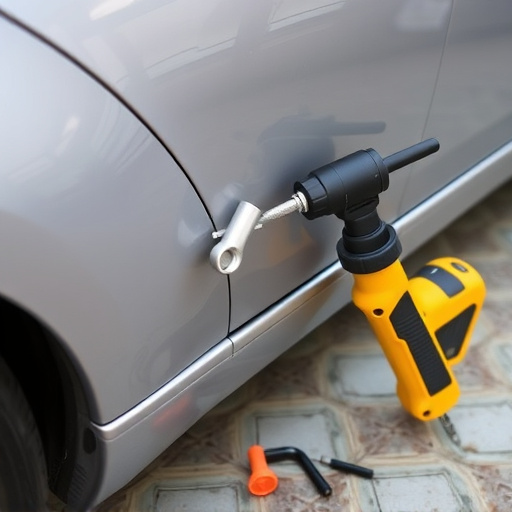
Exhaust system collision repair is a specialized skill crucial for restoring vehicles to their pre-accident condition. It involves intricate knowledge and precise techniques to manage the unique challenges posed by exhaust components, which are often exposed to high temperatures and significant structural stresses during collisions. The essential steps in this process include careful assessment of damage, disassembly of affected parts, and meticulous repair or replacement with like or compatible materials.
The tools required for exhaust system collision repair are tailored to handle the specific nature of these systems. These may include specialized cutting and welding equipment, such as plasma cutters and high-frequency welders, to ensure accurate and durable repairs. Additionally, temperature-resistant materials and gaskets are essential for maintaining the structural integrity and performance of the exhaust system post-repair. Professional technicians also rely on advanced diagnostic tools to identify any underlying issues that may have been exacerbated by the collision, ensuring comprehensive automotive restoration.
Advanced Techniques for Restoring Optimal Performance After a Collision
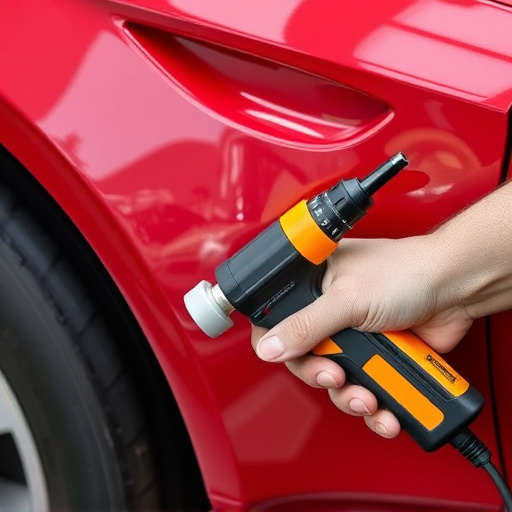
In the realm of exhaust system collision repair, advanced techniques have evolved to ensure optimal performance and longevity of a vehicle post-collision. Modern auto repair shops employ sophisticated tools and methods to accurately assess and fix damage to the exhaust system, which is crucial as it plays a vital role in engine performance and emissions control. These processes go beyond simple scratch repair or car bodywork restoration; they involve intricate alignments, precision welding, and advanced materials that mirror the original manufacturing standards.
Specialized training enables technicians to handle even complex cases, ensuring the exhaust system functions seamlessly with other components. This meticulous approach includes using specialized equipment for precise measurements, high-quality replacement parts, and techniques tailored to different vehicle makes and models. By combining these advanced techniques with a thorough understanding of car bodywork repairs, auto repair shops can deliver top-notch services that restore not just appearance but also the heart of the vehicle—its engine’s performance capabilities.
Safety Measures and Quality Control in Exhaust Collision Repair
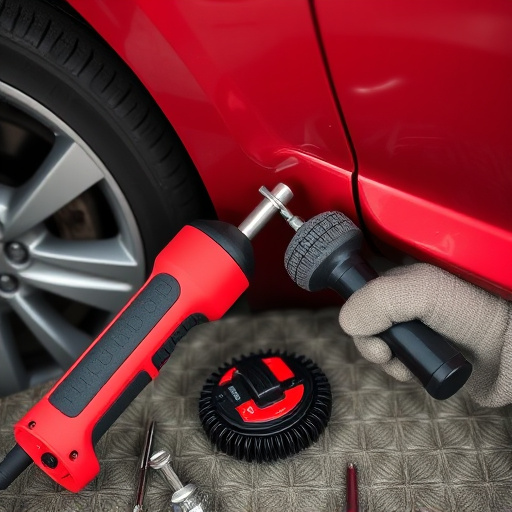
In exhaust system collision repair, safety is paramount. Before beginning any repair work, technicians must ensure a secure and controlled environment to prevent further damage or injury. This involves securing heavy parts, using proper lifting equipment, and donning protective gear such as gloves, safety goggles, and ear protection. Quality control measures are equally crucial, ensuring that every component of the exhaust system is thoroughly inspected, tested, and replaced if necessary. Advanced diagnostic tools can help identify hidden issues, guaranteeing that only after a comprehensive assessment does the repair proceed.
Proper techniques for scratch repair, vehicle paint repair, and tire services play a significant role in maintaining the overall quality of the exhaust collision repair. Technicians skilled in these areas ensure that any blemishes on the vehicle’s exterior are not just filled but seamlessly integrated into the existing finish, preserving the car’s aesthetic value. Moreover, ensuring top-notch tire services complements the structural integrity of the exhaust system, enhancing safety and performance post-repair.
In conclusion, mastering professional techniques for exhaust system collision repair is paramount to ensuring safe, high-quality vehicle restoration. By understanding essential steps, utilizing advanced tools, and implementing rigorous safety measures, technicians can achieve optimal performance outcomes following collisions. These techniques not only enhance vehicle reliability but also contribute to the overall satisfaction of car owners, highlighting the critical role of meticulous exhaust collision repair in the automotive industry.
